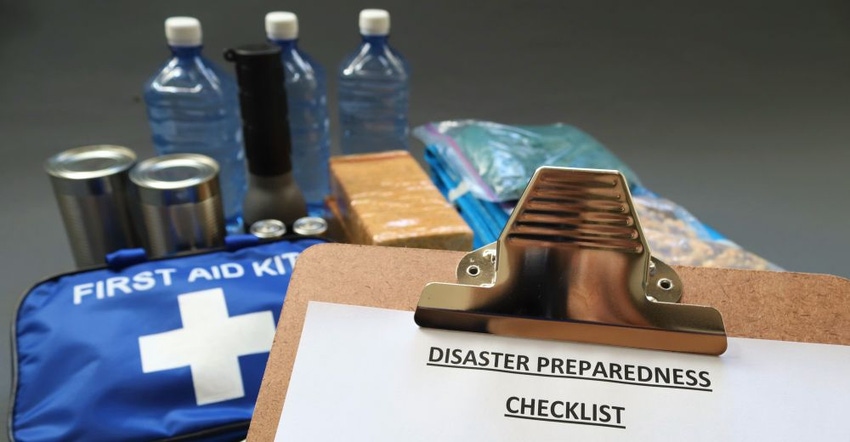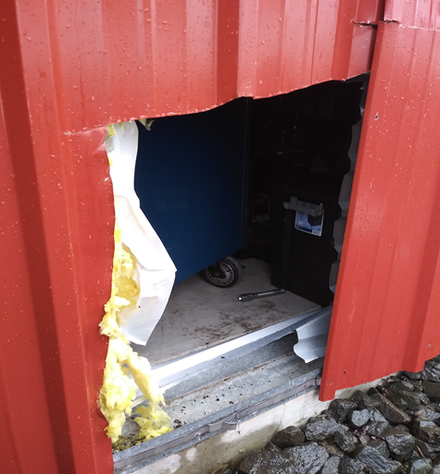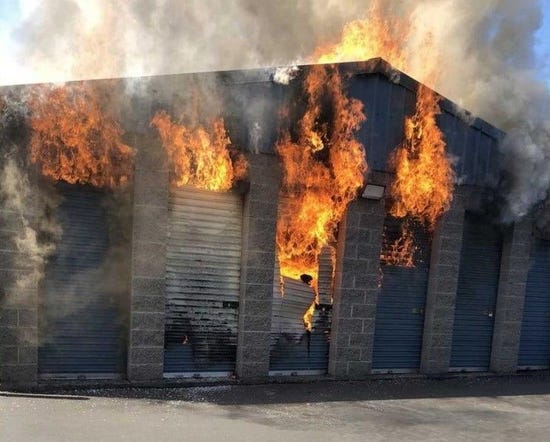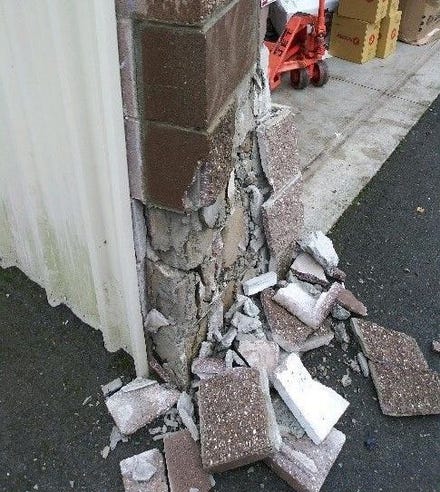Prevention Is the Best Medicine! Avoiding and Answering to Crises in Self-Storage
Self-storage operators can never truly know when they might face a disaster that could shake their business—sometimes literally! From break-ins to bizarre weather and even pest infestations, it’s always best to prevent and prep for such occurrences. Learn how to defend your operation against calamity.
July 7, 2021

When you think of the things that can go wrong at a self-storage facility, the list is long and varied. Possibilities range from small incidents like unit break-ins, accidents and pest infestations to large disasters such as floods, fires, hurricanes, explosions and more. Facility owners and managers should understand that it isn’t a matter of if but when. Eventually, all operators will deal with at least one of these calamities.
That said, there are ways mitigate the impact of a crisis and even prevent incidents from ever happening. Here are some prevention strategies and how to act if an unexpected event does occur.

A unit door cut by thieves
Unit Break-Ins
At the top of customers’ worries when using self-storage is whether their belongings will be safe from theft. As facility operator, you know how important it is to install security such perimeter fencing, access control, video cameras, etc., but there are other precautions you can take to deter criminals.
First, having a visible store manager who takes an active role in crime prevention is important. This means walking the property daily and looking for things that are out of place. You want to conduct lock checks, identify signs of vandalism, pick up trash, and confirm that gate and door security are functional.
Staff should engage with tenants whenever they can. Saying hello and developing a rapport goes a long way toward preventing crime. Good customers will then feel comfortable enough to report out-of-the-ordinary occurrences when they see them; and anyone who has designs on committing theft will realize they can’t go unnoticed. At our company, we aim to foster the feeling that the facility is a shared community between management and customers, that we’re all in the fight together.
Lastly, it might be a good idea to develop a relationship with your local police department. Invite them to tour the property so they can get to know it and, by proxy, become friendly with the managers as well.
Facility Fire
Prepping your self-storage facility to prevent fires is about understanding where issues could arise. It means alerting customers to company policies against onsite smoking or storing anything combustible such as fuel, flammable chemicals, explosives, batteries, etc. Your rental agreement should also state that no electrical connections are permitted, and no modifications may be made to any lighting or wiring within the storage space or on the premises. Show tenants where all the fire exits are and display them on an evacuation plan in your office.
In addition to your own preparation, your city or county fire marshal should contact you to arrange an annual fire inspection. During these visits, the inspector will check the sprinkler system, fire extinguishers, exit signs and smoke alarms to ensure they function correctly. He may also request to see documentation on maintenance for these systems. If he discovers something broken, hire a certified professional to do the repairs. There are also private fire-inspection companies that can provide services, but they’re typically expensive.

A facility fire
Flooding
It’s important to have a protocol for handling a flood. The plan might include monitoring street drains and interior facility drains to ensure they’re clear. If necessary, remove leaves or debris. If it appears rainwater is backing up to the point of flooding, make sure everyone on staff knows the agency to contact and how. This will typically be the city public-water department.
You may also want to create more in-depth protocols involving how and when to place sandbags if water starts nearing doors or loading bays as well as what to do if it gets into the office or storage units. For instance, one of our district managers in West Seattle says their plan includes renting carpet fans and dehumidifiers from a local provider.
Tornados and Hurricanes
In some parts of the country, these kinds of weather events are recurring. Prevention comes down to building design and construction. Hire an architect who has experience in designing structures for extreme natural forces. Typically, reinforced concrete and steel supports are used for the framework. You can also incorporate garage-door braces, stormproof doors, and other retrofitting techniques to add strength. Disastersafety.org offers guidance on 10 vulnerable areas to address.
Vehicle Accidents
As at most commercial properties, vehicle accidents occur at self-storage facilities from time to time. They might happen when a tenant has unintentionally backs into a building, pylon or fencing, for example, or runs into the access gate.
To limit these mishaps, clearly mark key areas to make them more visible. Driveways should be painted with directional arrows. Fire lanes should be designated with yellow paint and “no parking” messages. Loading zones should be labeled with highly visible paint. Building corners and covered loading areas should be protected with brightly colored bollards. Parking spaces can be delineated with concrete blocks.
Lighting is another key element in preventing collisions. A comprehensive plan designed to illuminate 100 percent of your property will decrease incidents that would otherwise occur at night or in low-light conditions. Steve Hajewski, marketing manager for self-storage building supplier Trachte Building Systems, suggests placing wall-mounted lights on buildings at every 40 feet and on driveways at every 20 feet, on alternating sides. LEDs are preferable due to their higher output.

A building damaged by a tenant vehicle
Pest Infestation
While it might not seem like an infestation is a “disaster,” it could become one. Every facility must deal with rodents and insects. Storage units are susceptible given that most are visited infrequently, allowing pests to nest undisturbed. A consistent, comprehensive treatment plan is the best way to avoid larger problems down the road.
Inspect your property regularly to identify and repair areas that could allow pests to infiltrate. Start by ensuring each unit door has the tightest possible seal with proper weather-stripping. Routinely inspect gutters and downspouts to ensure water isn’t pooling, as stagnant water is a prime breeding ground for mosquitos and can attract rodents and other pests.
Be transparent with customers regarding your policy against storing food in units. At one facility in Missouri, a food distributor was storing Twinkies and Ho-Hos. They mistakenly believed that because these items were well-packaged, they wouldn’t attract rodents. Well, the little nuisances got into the unit and the the ones adjacent, destroying other tenants’ property.
While it’s tempting to save money by doing your own pest control, it’s better to contract with a reputable service. Not only will it take this task off your plate, a professional has the experience to identify the type of infestation and administer the correct treatments and remediation. He can also point out structural vulnerabilities at your property.
Choose a company that’s part of a national or state pest-management association. Check Google and Yelp reviews and ask other storage operators for referrals. Schedule weekly or monthly visits for inspections and pesticide treatments. If the exterminator finds issues, he can immediately implement solutions. If you see signs of infestation such as droppings, gnaw marks on structures or wiring, holes or wood damage, report them to your provider immediately.
Additional Advice
Always remember that the customer should be your main priority. Part of great self-storage service is ensuring you stay in continuous contact with tenants during any upheaval. Keeping them updated will make them feel important and well-tended.
Teamwork is also critical. To successfully navigate any one of the above incidents, you need everyone on your team working together. Ensure every employee conveys the same message to customers. Lastly, all staff need to be willing to put in the extra time to prevent problems whenever possible.
Derek Hines is a writer for West Coast Self-Storage, a self-storage management, acquisitions and development company with facilities in California, Oregon and Washington. He writes extensively on all subjects related to the storage industry. For more information, call 877.611.8550.
About the Author(s)
You May Also Like





